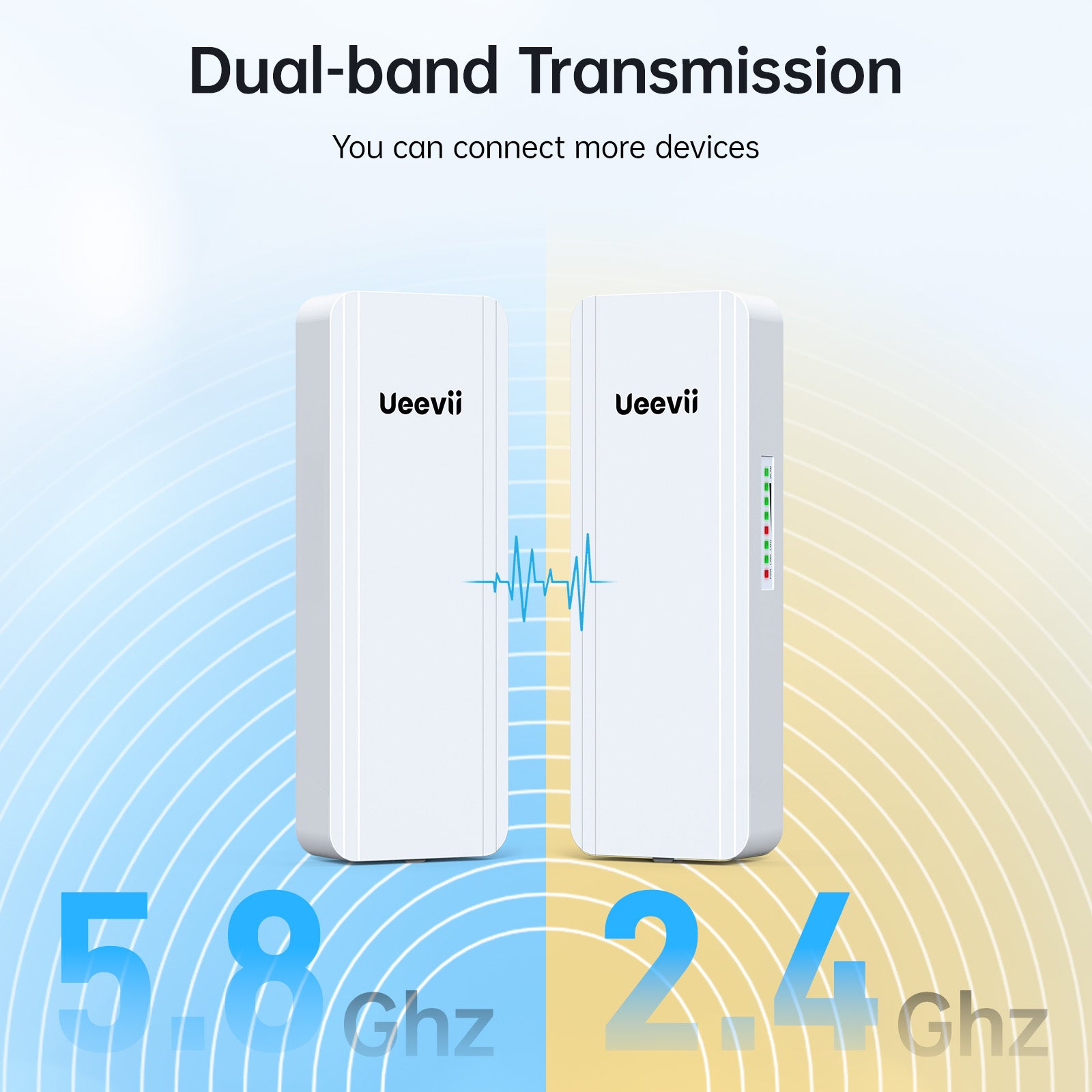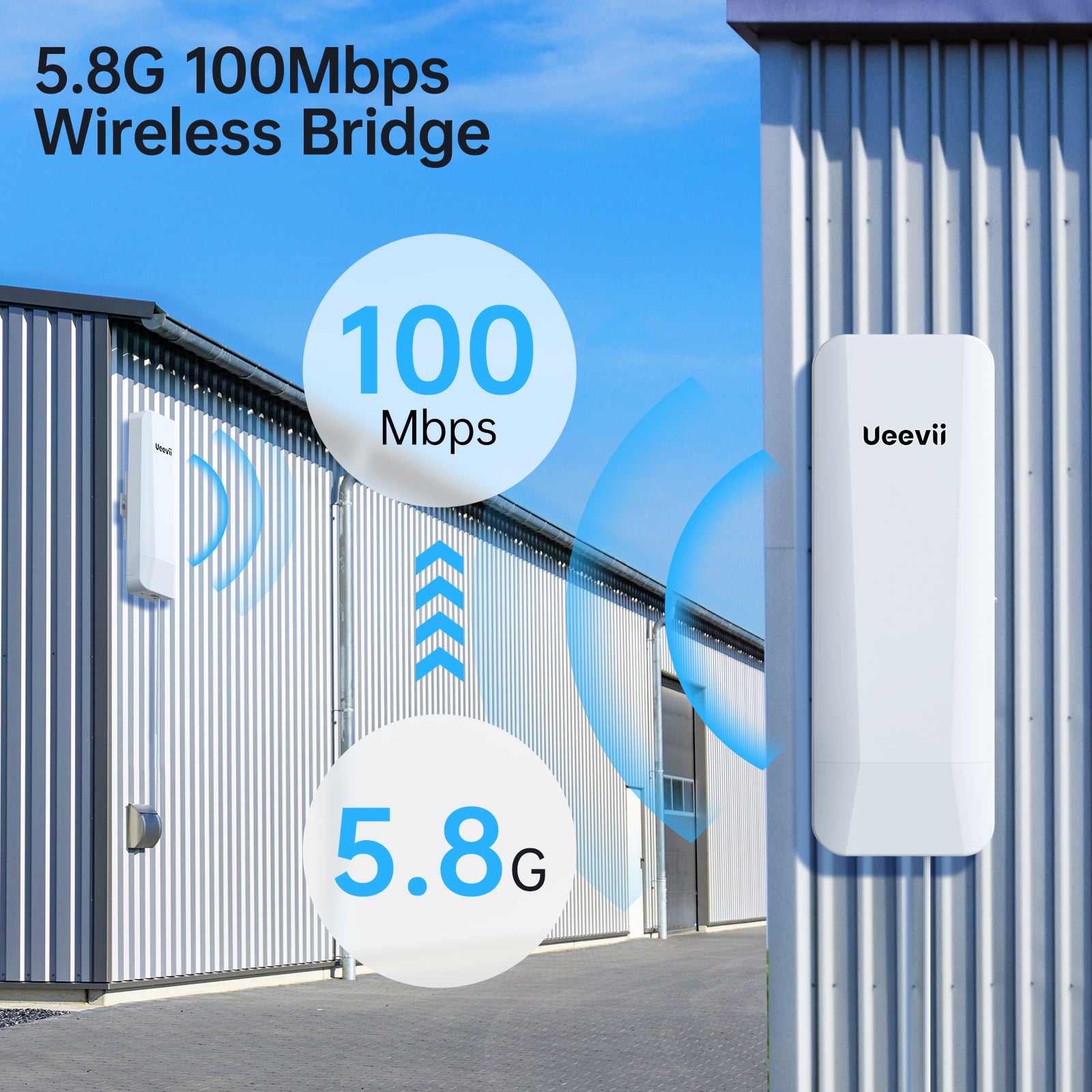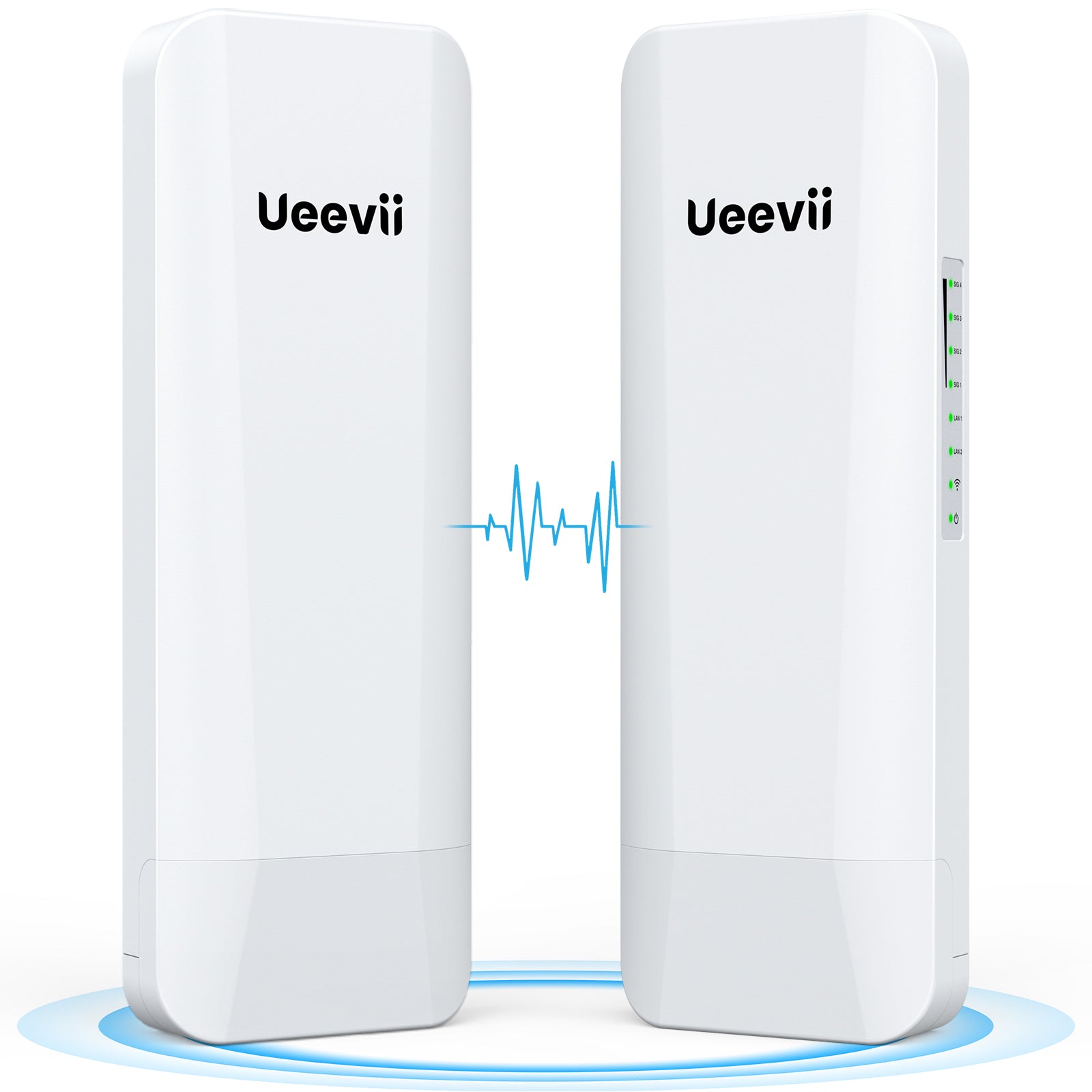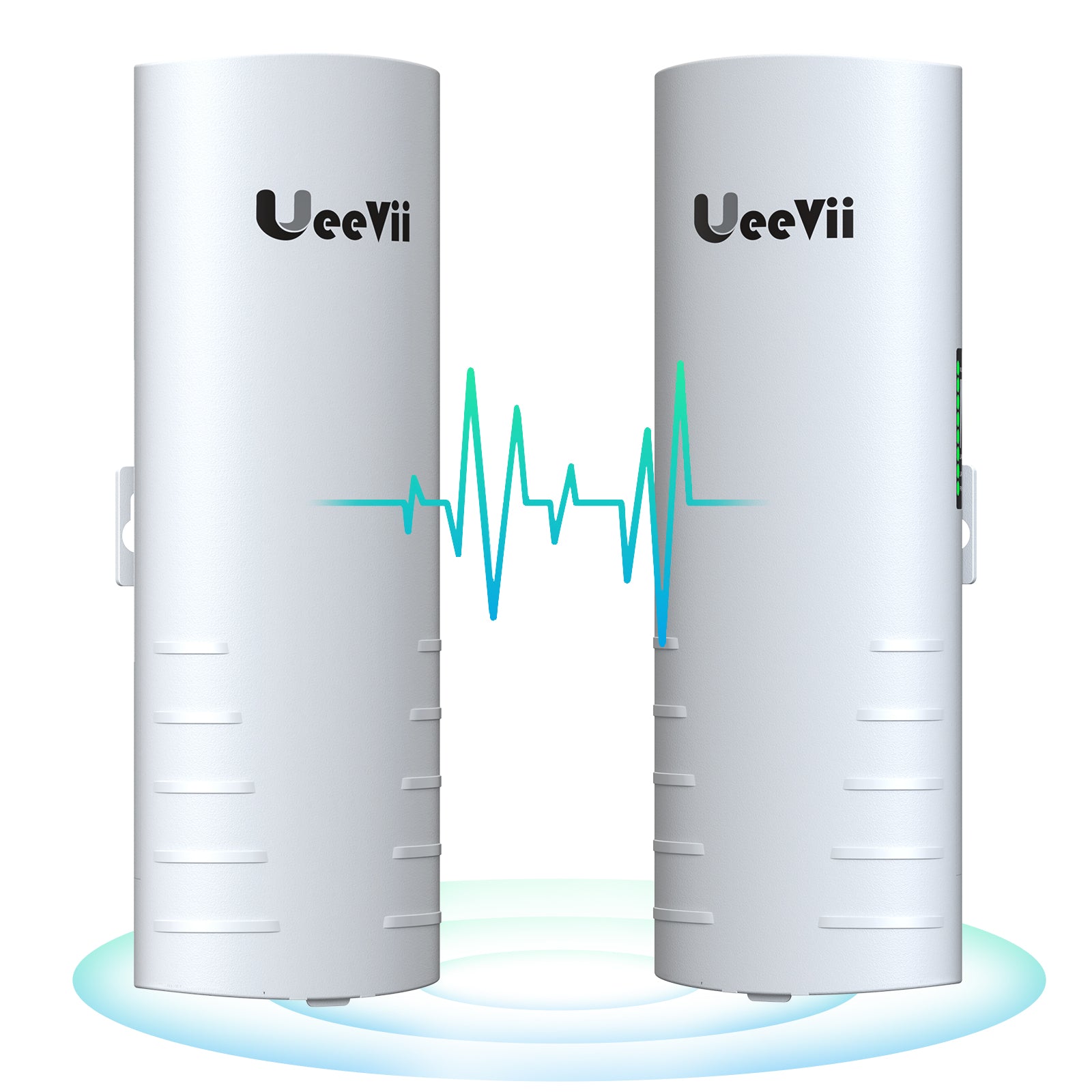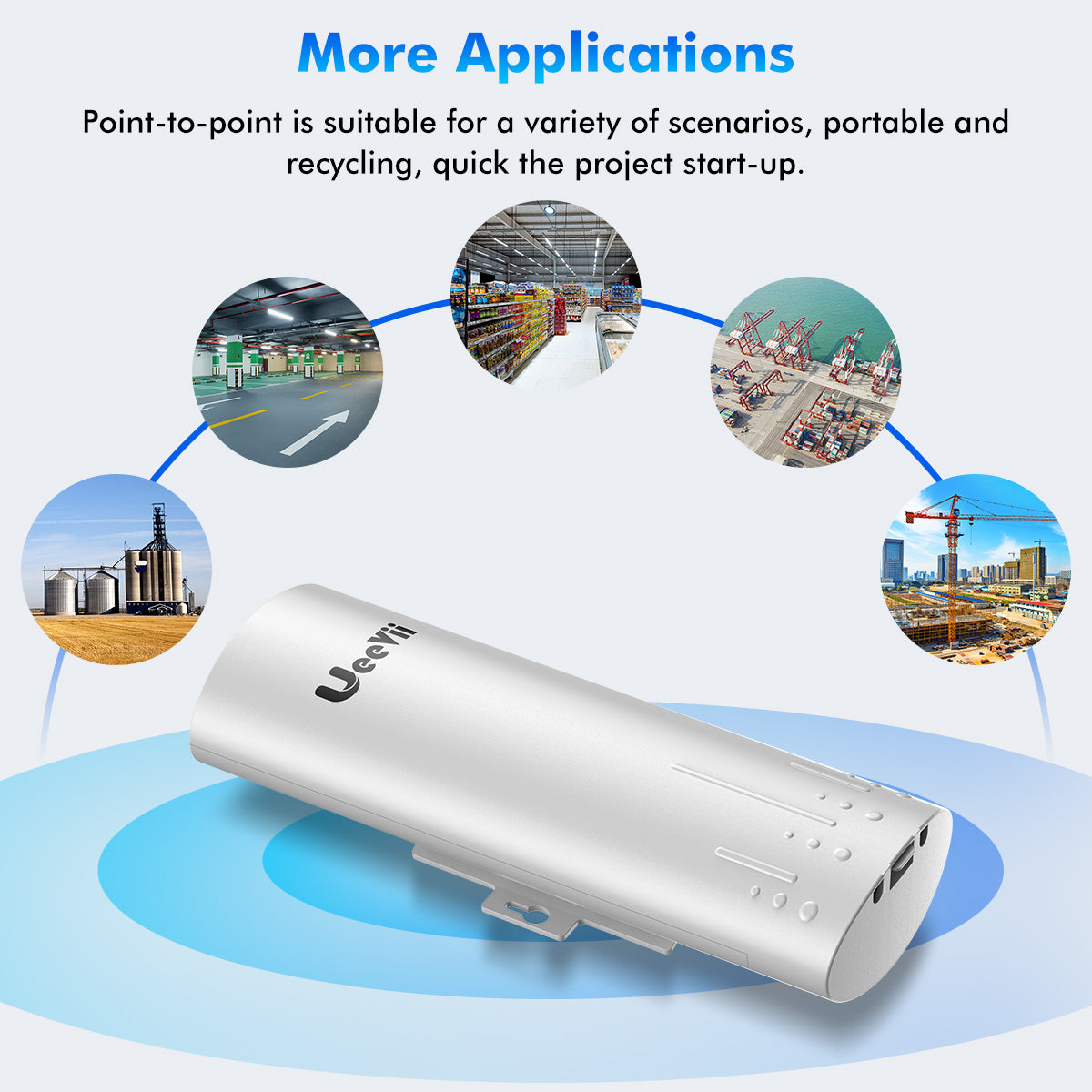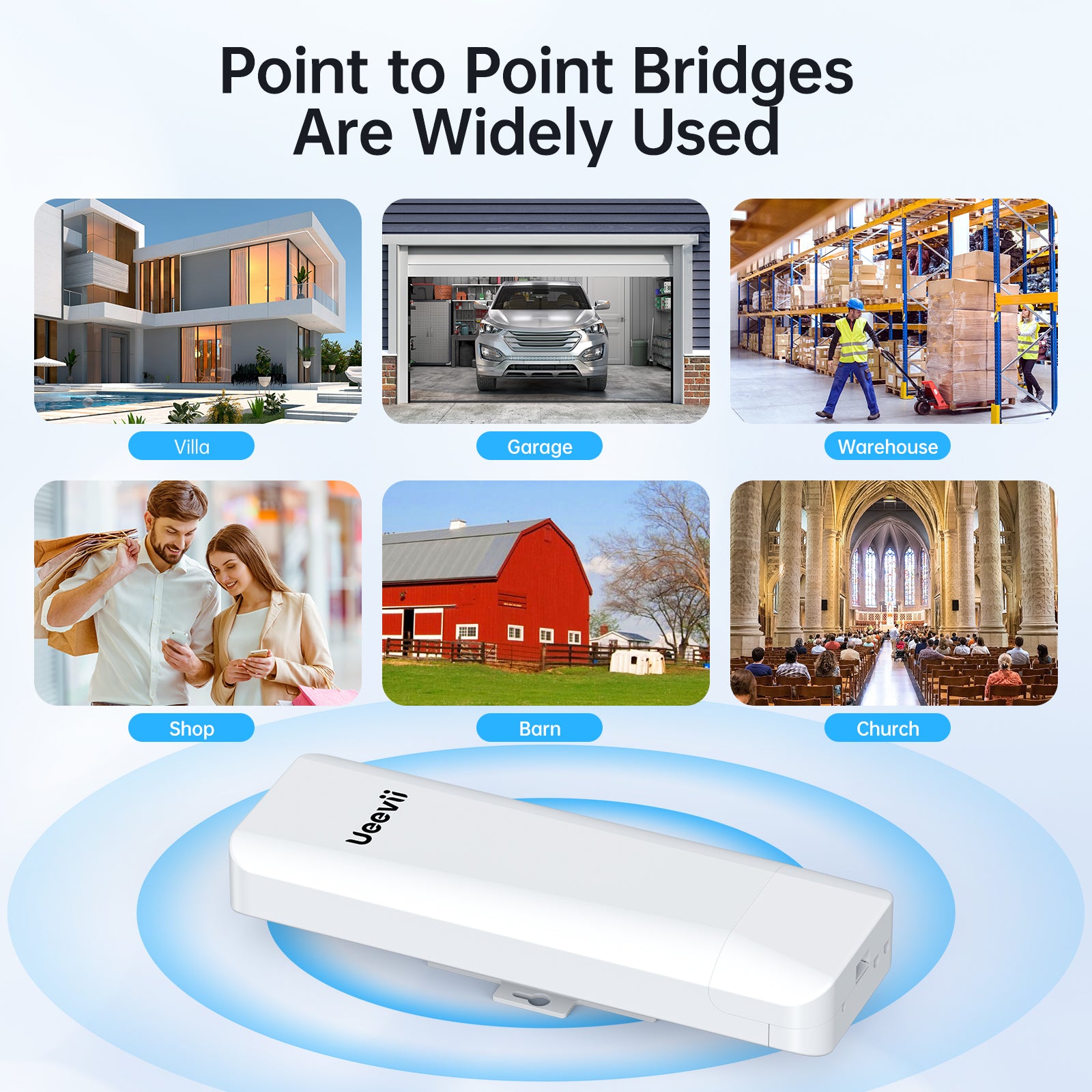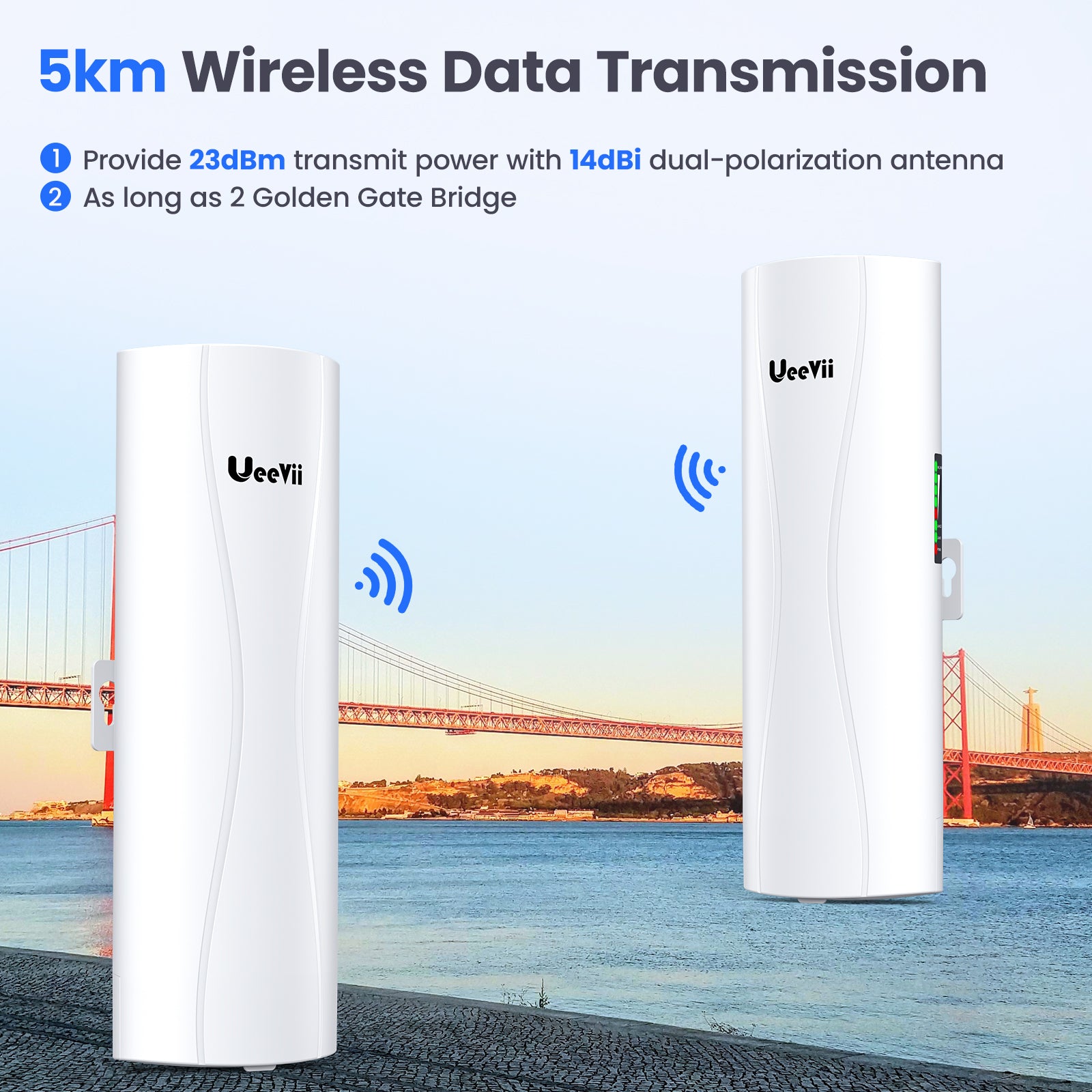Understanding the 5GHz WiFi Bridge: An Overview of Technology and Applications
The Evolution of WiFi Technologies: From 2.4GHz to 5GHz
WiFi technologies have come a long way since their inception. The early days saw the dominance of 2.4GHz bands. These bands were widely used due to their range. But they had limits in speed and were prone to interference. Enter the 5GHz WiFi bridges. They offer faster speeds and reduced interference. With the rise of streaming and gaming, demand for 5GHz grew rapidly. It became key in industries needing high-speed, secure connections. The shift to 5GHz has been vital in evolving wireless tech. It shapes how we connect and do business today.

Key Features of 5GHz WiFi Bridges
5GHz WiFi bridges deliver standout features that make them ideal for various applications. Notable for their high-speed connectivity, they offer greater bandwidth compared to 2.4GHz networks. This means faster data transfers, which is critical for high-demand scenarios. With less interference from other devices, they provide a more stable connection. This is key in crowded or device-heavy environments. These bridges also have lower latency. This results in smoother streaming and improved online gaming. They support newer protocols such as 802.11ac and 802.11ax, enhancing performance. Additionally, they offer better security options to protect sensitive data. Lastly, with a shorter range than 2.4GHz, they allow for denser network deployment. This is useful in large-scale operations where space and coverage are important.
Industry Use Cases for 5GHz WiFi Bridges
5GHz WiFi bridges offer faster, more reliable connections. They are now key in many fields. Here are some ways they are used:
- In transport, they support communication between vehicles and infrastructures.
- They help retail stores manage inventory with speed. This ensures products are in stock.
- The hospitality sector uses them for smooth guest internet access.
- They boost security systems with high-data video streaming.
- Manufacturing plants use them to link machines and sensors.
Each case shows 5GHz WiFi's role in efficiency and innovation.
5GHz WiFi Bridges and Their Impact on the US Industry
Enhancing Connectivity: The Role of 5GHz in Modern Workspaces
In the US, workspaces are evolving fast. 5GHz WiFi bridges are key to this change. They allow faster data transfer over wireless networks. Such speed is vital in offices full of devices. For tasks like video conferencing, the 5GHz band offers less interference. This means clearer calls and smoother streaming. Plus, it can help reduce lag in cloud-based apps. Workers become more productive with these tech upgrades. The 5GHz band's larger channels also aid in this. They support more devices without slowing down. As more firms move to the cloud, such tech will be even more important.
Healthcare and Education: Revolutionized by High-Speed Networks
5GHz WiFi bridges have transformed healthcare and education in the US. In hospitals, fast, reliable networks support telemedicine and digital records systems. Doctors can now share patient info quickly and safely. In schools, high-speed internet means better access to online resources and learning tools. Students and teachers can interact with digital content with no lag. The jump to 5GHz has made these sectors more efficient and advanced.
The Influence of 5GHz Technology on IoT and Smart Home Devices
The expansion of 5GHz WiFi technology has been a game-changer for IoT and smart homes. This leap in wireless communication means faster data transfers. It also allows for more device connections without clogging the network. Smart homes now have seamless integration of devices like thermostats, cameras, and lights. IoT applications benefit with stable connections for real-time data sync. Thus, 5GHz WiFi bridges are crucial in these spaces for their efficiency and reliability.
Looking Ahead: The Future of 5GHz WiFi Bridges in the United States
Innovations and Trends in 5GHz WiFi Technology
As 5GHz WiFi technology evolves, we can expect to see remarkable innovations. These will shape how we connect and interact with the digital world. Advancements in antenna design may enhance signal reach and stability. Improved power efficiency could make devices last longer on a single charge. We also foresee integration with emerging technologies like WiGig for faster speeds. Security protocols are set to become more robust to protect sensitive data. Furthermore, the clever use of AI may optimize network performance. All these trends point towards a smarter, more connected future.
Regulatory Considerations and Compliance for WiFi Bridge Adoption
The future deployment of 5GHz WiFi bridges in the U.S. depends on meeting regulatory standards. The Federal Communications Commission (FCC) has set rules that govern the use of wireless frequencies, including the 5GHz band. These regulations aim to prevent interference with other technologies and ensure public safety. Manufacturers and businesses must ensure their equipment is compliant. This may include obtaining certification and adhering to power limits. It's also crucial for industries to stay updated with policy changes that might affect the use of 5GHz bridges. Such compliance not only safeguards operations but also influences the pace of adoption across sectors.
Preparing for the Next Wave: Anticipating Changes in Consumer and Industry Demands
As the US gears up for the future, it's key to stay ahead of tech trends. With 5GHz WiFi bridges, both consumers and industries must prepare for shifts in demand. Expect more devices to rely on 5GHz for stable, speedy connections. This shift may call for wider broadband access and updated IT infrastructures. Companies should plan for these needs to avoid falling behind. Users should also look for devices with advanced 5GHz support. This readiness can keep the US at the forefront of wireless tech.







